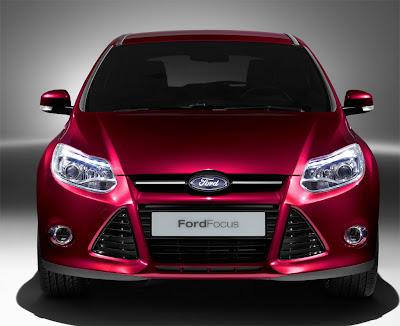 Ford Focus 2.0 I4 Engine
Ford Focus 2.0 I4 Engine Ford Focus 2.0 I4 Engine
Ford Focus 2.0 I4 Engine Ford Focus 2.0 I4 Engine
Ford Focus 2.0 I4 Engine Ford Focus 2.0 I4 Engine
Ford Focus 2.0 I4 Engine Ford Focus 2.0 I4 Engine
Ford Focus 2.0 I4 Engine
Ford Focus 2.0 I4 Engine
The combination of these technologies help make the dual-overhead-camshaft (DOHC) Focus 4-cylinder one of the most powerful, fuel-efficient and refined engines in its class and one of the most advanced non-turbocharged four-cylinder powerplants Ford has ever offered. Horsepower is rated at 160 and torque 146 lb.-ft., up from 140 and 136 respectively in the 2011 Ford Focus.The 2.0-liter engine coming early next year to the North American version of the 2012 Ford Focus will be one of the first on the market to combine the technology of gasoline direct injection (DI) with twin independent variable camshaft timing (Ti-VCT) and E85 flex fuel capability.“By combining direct injection and Ti-VCT, we’ve been able to make a quantum leap in fuel economy and performance,” said Derrick Kuzak, group vice president, Global Product Development. “We’re meeting the goals of our global powertrain strategy, and we now have another key engine in our lineup.”
The direct-injected 2.0-liter Ti-VCT I-4 also serves as another example of Ford delivering fuel economy leadership by using advanced technologies to produce surprising power from minimal displacement. The engine can deliver outstanding fuel economy and emissions along with the throttle response, performance and flexibility expected from a world-class engine.
Fuel metering duties on the 2.0-liter I-4 are handled by an injection system that precisely delivers a fine mist of fuel directly into each cylinder for optimal performance, economy and emissions. Unlike port fuel injection (PFI) engines that spray fuel into the intake system, the direct injection system puts the fuel in the combustion chamber, exactly where it needs to be for combustion.
The high-pressure fuel injectors are positioned to the side of each cylinder, aiming the fuel directly into the cylinder adjacent to a high-intensity spark plug and alongside the intake and exhaust valves. Fuel is sprayed into the cylinders at pressures of up to 2,150 pounds per square inch, which is about 35 times more intense than PFI injection.
To keep overall powertrain weight as low as possible, the block, cylinder head and oil pan – traditionally the heaviest engine components – are aluminum castings. To increase rigidity, these elements are ribbed for additional strength and durability. Pistons are cast aluminum as well, with the light weight helping to reduce reciprocating mass.
No comments:
Post a Comment